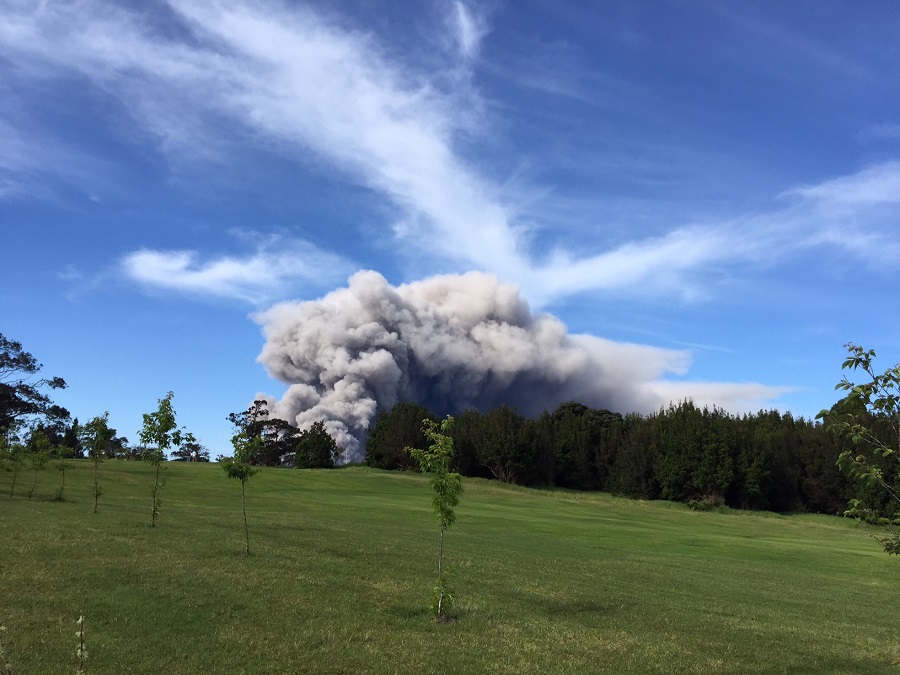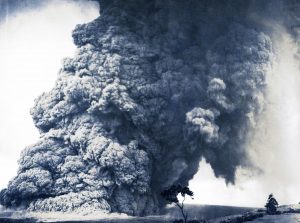
The USGS is describing this morning’s early explosion at Kilauea as “tall and small”, comparing it to an explosive blast of steam and ash that occured on Tuesday. USGS spokesperson Michelle Coombs told reporters assembled outside Hawaii County’s Civil Defense office a short time ago that the 4:17am blast was far more energetic than Tuesday’s explosion, but contained much less ash and debris. Coombs warned that explosive events as large or even larger than today’s or Tuesday’s could be coming in the coming days and weeks.
The blast of ash triggered a new round of Ashfall Advisories for Hawaii’s Big Island. Due to the extreme height of today’s blast which sent ash 30,000 high compared to the 12,000 foot high plume on Tuesday, the National Weather Service expanded Ashfall advisories for coastal waters around the entire island of Hawaii. Ashfall Advisories are also up for the eastern side of the state where no more than a quarter of an inch of ash could fall. The Ashfall advisory is in effect through at least 6pm today although timing could shift based on additional explosions or shifts with wind. The National Weather Service cautions that “if additional large explosions occur, winds aloft could push the resulting ash to the communities of lower Puna such as Pahoa and Kapoho, south to the shoreline.”

That area that National Weather Service describes is the area being impacted by ongoing eruptive fissures which are splattering lava and emitting sulfur dioxide into the air, more than 20 miles away from where Kilauea’s explosion happened today.
Today’s explosion was forecast by USGS but was not felt by local residents. After a series of earthquakes yesterday, the USGS evacuated the Hawaii Volcanoes Observatory located within Hawaii Volcanoes National Park for a facility at University of Hawaii in Hilo with threats of a larger steam explosion and resulting ash fall becoming more likely. When the large explosion happened this morning, few in the area were even aware. USGS says the explosion occured deep inside the volcano and noise wouldn’t travel in the way an explosion on the surface would. Future explosions may do the same, with large blasts of rock, steam, and ash exiting the volcano with more of a swoosh than a bang.
Scientists are comparing these explosions this month to an explosive event that unfolded in May of 1924 at Kilauea. USGS was quick to point out today that the 1924 event was a series of large explosions over a period of weeks and not merely a single explosion. Activity seen this year may be a long duration event too and may result in many explosions, some even larger than what was seen today and Tuesday.
Beyond the hazards of sulfur dioxide and lava flows in the area being impacted by eruptive fissures, volcanic ash presents a problem over a much larger area, especially for aviation. In a recent media update, the USGS warned that large plumes of ash could impact aviation around Hawaii and closures of the Big Island’s Kona and Hilo International airports could be closed. The USGS says the decision to stop flights would be at the discretion of the FAA, local airport operators, or the airlines themselves. At this time, operations continue as normal at both Big Island airports but that could change as volcanic activity changes.